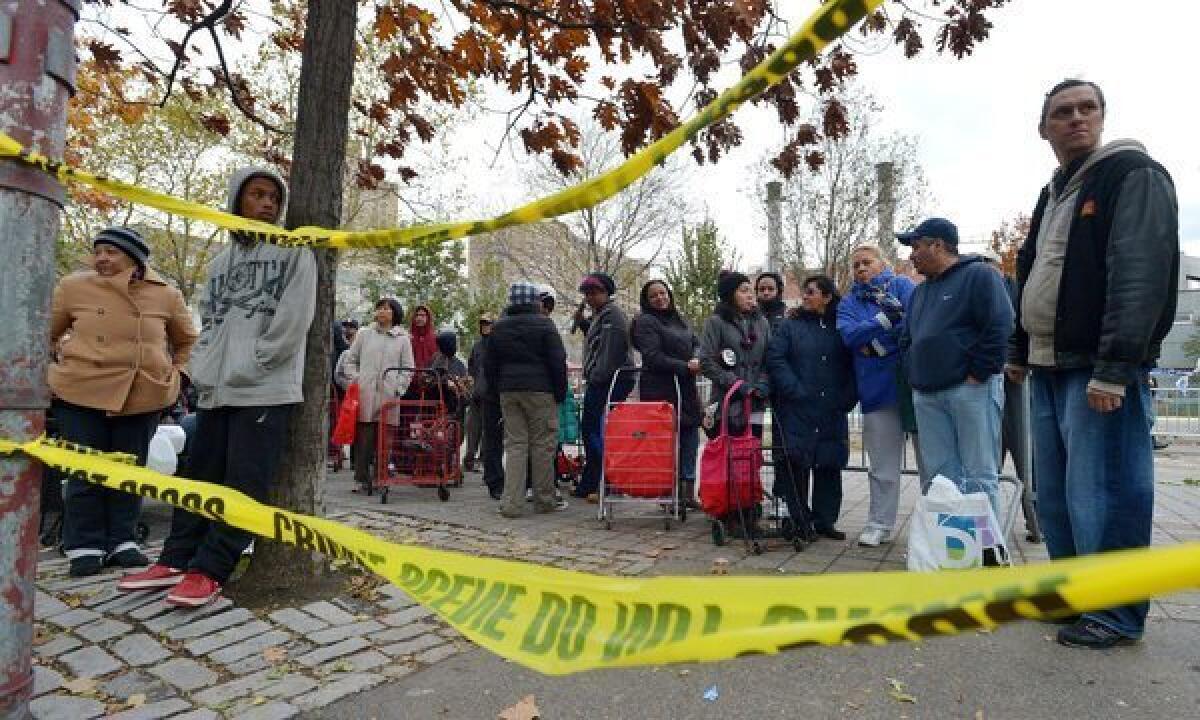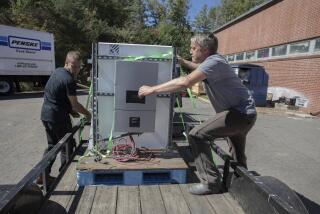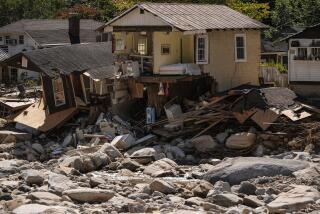The donations Sandyâs victims donât need

As the devastation wrought by super storm Sandy becomes increasingly evident, one of the greatest of human impulses is certain to kick in: generosity.
Over the next few weeks, we are likely to see a frenzy of clothing drives and canned food drives. Pet supplies, dry goods and books will be donated and dispatched to the affected areas. For many good-hearted people, participating in this kind of giving feels more concrete and satisfying than simply writing a check. But, as weâve learned from studying Hurricane Katrina, the Haiti earthquake, the Japanese tsunami and numerous other disasters, unsolicited donations are seldom useful and often burdensome.
The best estimates available suggest that about 60% of the supplies that arrive at a disaster site are not beneficial to the survivors and should not have been sent. Moreover, unloading and storing or disposing of unnecessary donations can take away from more important relief efforts. When trucks, planes or ships laden with donations arrive at a disaster site, responders face a difficult choice. Unloading and processing the cargo requires considerable human resources, yet if the cargo is not unloaded, it can block access for shipments that really are crucial.
THEN AND NOW: Devastation from super storm Sandy
Disaster responders refer to this glut of inappropriate donations as âa second-tier disaster.â They say supplies often arrive unsorted or in a condition impossible to efficiently identify and inventory. They tell of receiving such inappropriate items as wedding gowns, tuxedos and Spanish flags, as well as goods that are perishable, have passed expiration dates or are in poor condition. They often have no way of distributing goods to those who might need them. And while the great majority of donations come from individuals, community groups, companies and others who strongly want to help, some are given with a different motive. Inevitably, there are donations from companies using the disaster as a convenient mechanism to dump expired supplies or products that did not sell in the market.
During Hurricane Charley in 2004, disaster workers at a Florida distribution center reported getting a truckload of sex toys. In Japan in 2011, relief workers reported âtoo many blankets,â âtoo much clothingâ and âa lot of broken bikes.â In 2005, after Katrina, collection sites along the Mississippi Gulf Coast became, as one worker put it, ânothing more than dump sites.â When drivers couldnât find willing recipients for truckloads of clothing sent to affected communities after Hurricane Andrew in 1992, they âunloaded them on the side of the road,â a disaster worker said. âThe heat and usual afternoon summer rains quickly turned the piles into heaps of stinking, rotting cloth.â As a relief worker in Joplin, Mo., put it after the 2011 tornado, âWe have been overwhelmed by disorganized generosity.â
Donations are driven in part by how stories are played in the media, and certain kinds of coverage tend to accelerate well-meaning but inappropriate donations. In the days after 9/11, for example, a TV news show reported that the feet of search and rescue dogs were getting burned. This prompted what one relief worker described as a âtsunamiâ of dog shoes sent by pet stores, dog shoe manufacturers and animal lovers. After the Joplin tornado, an organization told the media that it had a shortage of extension cords. Shortly after, huge numbers of them started to arrive, overwhelming both the storage capacities and actual needs on the ground.
The human impulse to help those in need should be encouraged. But people need to be educated on how best to help.
In general, the most effective way to help is to donate money to reputable relief organizations with a local presence in the affected area. Such organizations know the needs of the communities and have experience and resources to get the assistance to those who need it. When donating, donât earmark your gift for a specific purpose, as that can prevent a relief organization from using your contribution for what is most needed. Consider supporting relief groups based in the area of the disaster. These groups are frequently overlooked by donors but may be the best positioned to help the victims.
If youâre determined to send physical donations, do so in conjunction with an organization that has made a specific request and is set up to receive and distribute them. And remember that donating supplies can have the unintended consequence of taking business away from hard-hit local merchants.
One alternative worth considering is to gather physical donations, then hold a sale and give the proceeds to a relief organization. This approach has been used by the Finnish Red Cross with great success.
Learning how to donate will not only help the survivors of Sandy, it will help the survivors of disasters to come.
JosĂŠ HolguĂn-Veras is an engineering professor at Rensselaer Polytechnic Institute and a member of the National Academy of Sciencesâ Disaster Research Roundtable. His colleagues Miguel Jaller, Luk N. Van Wassenhove, Noel PĂŠrez and Tricia Wachtendorf collaborated on the research for this article.
More to Read
A cure for the common opinion
Get thought-provoking perspectives with our weekly newsletter.
You may occasionally receive promotional content from the Los Angeles Times.










